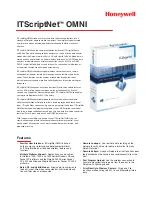
198
ActionScript language elements
The following example shows using
for..in
to iterate over the elements of an array:
var myArray:Array = new Array("one", "two", "three");
for (var index in myArray)
trace("myArray["+index+"] = " + myArray[index]);
// output:
myArray[2] = three
myArray[1] = two
myArray[0] = one
The following example uses the
typeof
operator with
for..in
to iterate over a particular
type of child:
for (var name in this) {
if (typeof (this[name]) == "movieclip") {
trace("I have a movie clip child named "+name);
}
}
Note:
If you have several movie clips, the output consists of the instance names of those clips.
The following example enumerates the children of a movie clip and sends each to Frame 2 in
their respective Timelines. The
RadioButtonGroup
movie clip is a parent with several
children,
_RedRadioButton_
,
_GreenRadioButton_,
and
_BlueRadioButton_
.
for (var name in RadioButtonGroup) { RadioButtonGroup[name].gotoAndStop(2);
}
function statement
Usage 1: (Declares a named function.)
function
functionname
([
parameter0
,
parameter1
,...
parameterN
]){
statement(s)
}
Usage 2: (Declares an anonymous function
and returns a reference to it.)
function ([
parameter0
,
parameter1
,...
parameterN
]){
statement(s)
}
Comprises a set of statements that you define to perform a certain task. You can define a
function in one location and invoke, or
call
, it from different scripts in a SWF file. When you
define a function, you can also specify parameters for the function. Parameters are
placeholders for values on which the function operates. You can pass different parameters to a
function each time you call it so you can reuse a function in different situations.
Use the
return
statement in a function's
statement(s)
to cause a function to generate, or
return
, a value.
Содержание Flash Lite 2
Страница 1: ...Flash Lite 2 x ActionScript Language Reference...
Страница 22: ...22 Contents...
Страница 244: ...244 ActionScript language elements...
Страница 760: ...760 ActionScript classes...
















































